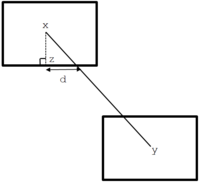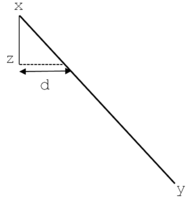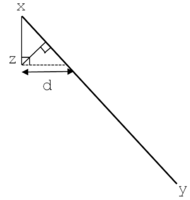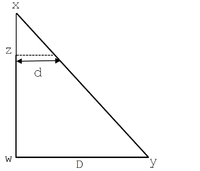Hi all,
I wonder if anyone can tell me if the following is possible please?
I know the co-ordinates of the points x, y and z but have no idea how one might work out the distance d or even if such a solution is possible.

[Really, I want to know where the long line cuts the border of the box and the distance d should give me that I think]
This isn't homework - just something which has cropped up and eludes me. It's been an *awfully* long time since I sat in a maths class and I really don't know where to begin. So if anyone can shed any light on the matter - whilst explaining it in the simplest of terms - then I'd be extremely grateful
TIA.
I wonder if anyone can tell me if the following is possible please?
I know the co-ordinates of the points x, y and z but have no idea how one might work out the distance d or even if such a solution is possible.

[Really, I want to know where the long line cuts the border of the box and the distance d should give me that I think]
This isn't homework - just something which has cropped up and eludes me. It's been an *awfully* long time since I sat in a maths class and I really don't know where to begin. So if anyone can shed any light on the matter - whilst explaining it in the simplest of terms - then I'd be extremely grateful
TIA.



